Let's talk! Browse our offer and let us help you create your own budget.
Top 10 Gardens in the Spanish Speaking World
It’s May – spring is in full swing and nature has donned her finest splendor. Below you’ll find a panoramic peek at scenic, historic, relaxing, and spectacular gardens around the Spanish speaking world.
|
Granada’s Generalife gardens were built in the 13th century as part of a summer residence for Nasrid caliphs. Although the gardens are located just outside the walls of the Alhambra palace, they originally could not be accessed from there, being accessible instead from the Cuesta de los Chinos. Today visitors reach this masterpiece in landscape architecture from the palace fortifications by first crossing a bridge over the moat, then following the Paseo de los Cipreses (Walkway of the Cypresses) to arrive at the Jardines Nuevos (New Gardens) and its open-air auditorium. The Patio de la Acequia (patio of the irrigation canal) highlights the Generalife gardens with its summer palace. This grand estate has served as a place for relaxing ever since its creation eight centuries ago. |
|
This ensemble of gardens just a few kilometers outside of Madrid complements the Royal Palace of Aranjuez, which is something like the Spanish version of Versailles. Four gardens make up this large green space: the Parterre, with four fantastic fountains, the Isla, surrounded by the Tajo River, the Principe, measuring 7 meters in perimeter and featuring an artificial lake called el Estanque de Chinescos, and the Isabel II, the most modern of the four (19th century). Visitors can expect to see pines, cypresses, magnolias, and banana trees including Madrid’s tallest tree the Plátano de la Trinidad standing at 57 meters. |
|
Created by order of Fernando VI in 1755, this is Spain’s oldest botanical garden. Today it sits on the Paseo del Prado, next to the museum. It was moved to this location shortly after its foundation in 1781. This engaging garden displays aromatic and medicinal plants from Europe, America, and Pacific coastlands in handsome terraces, the largest of which is the Terraza de los Cuadros. The Terraza de las escuelas (Terrace of the Schools) is unique in that its plant families are taxonomically organized in a way that allows observers to follow the plants’ evolution. A statue of Carl Linnaeus stands in the center of the Plano de la Flor Terrace, which offers a splendid collection of bonsai trees. |
|
The name of this botanical garden located on the island of Tenerife in Puerto de la Cruz recalls its 18th century origins, a time when Puerto de la Cruz was not yet a town separate from La Orotava. The garden was created to acclimate plants brought from the America’s so they could later be grown on the Iberian Peninsula; Spain’s first tomatoes, peppers and ears of corn all grew here. This is a must-visit garden in the neighborhood of La Paz. |
|
To the south of Mexico City, in Xochimilco, a network of canals conjures images of a distant past, an age when Tenochtitlan served as the capital of the Aztec Empire. Colorful Trajineras, traditional boats propelled by poles manipulated with expert precision by drivers, carry passengers to these aquatic gardens.
|
|
In Buenos Aires’ popular Palermo neighborhood, and between Casares and Figueroa Alcorta avenues, this garden stands out from its Argentine surroundings. It’s like a slice of Japan right in the middle of BA that gives residents and visitors the chance to admire the elegance of Japanese art captured in this garden. It was created by the local Japanese community as a tribute to then crown prince of Japan Akihito and crown princess Michiko when the couple visited the city in 1967. Today the garden is home to a cultural activity center and the Fundación Cultural Argentino Japonesa. Visitors can expect to see the wonderful autumn reds and ochres of cherry trees, azaleas, and Japanese maples (remember the southern hemisphere is in the middle of fall). |
|
In the city of Elche (in the province of Alicante) and within the city’s enormous palm grove, this garden was accredited as a UNESCO World Heritage Site in 2000. The Huerto del Cura is a thriving botanical garden that covers 13,000 square meters and features over 1,000 palm trees along with pomegranate trees, jujubes, orange trees, lemon trees, and fig trees that all create a refreshing atmosphere filled with the sweet spring aroma of orange blossoms. Huerto del Cura, meaning “the priest’s garden”, takes its name from the property’s early owner José Castaño Sánchez who was a priest and owned the land until 1918. |
|
These gardens in Seville, embracing the Royal Alcazars Palace, tell the tale of the region’s fascinating past through the diverse architectural and landscaping styles that they exhibit. Mudejar, baroque, renaissance, and gothic styles are all present here. There are a total of 12 gardens, most noteworthy of which are the gardens displaying Arab style, the Garden of Mercury designed in mannerist style, and other more current gardens. There is also a labyrinth that invites visitors to “lose themselves” among the enjoyable scenery. |
|
Ciudadela Park was Barcelona’s first great garden-park. Built on the land that once held the city’s fortress (hence the park’s name meaning citadel), it was designed after Paris’ Luxembourg Gardens. The park covers 17.5 hectares, not including the space occupied by the adjacent Barcelona Zoo. Curiously, the park continues to hold the old arsenal of the citadel, the current location of the parliament of Catalonia. The park was built for the 1888 Barcelona Universal Exposition, and a young Gaudí participated in its design by creating the Cascada Monumental, an incredible sculptural ensemble that is full of surprises. Take a stroll around the park to also discover the Castle of the 3 Dragons and a replication of London’s Crystal Palace erected for that city’s 1851 Expo. |
|
In 1957, when a terrible flood in Valencia cost the lives of 81 people, local authorities decided to put an end to the threat of flooding in the city by redirecting the Turia River and laying a highway in the place it had flowed. The highway project was never carried out, but in 1986 a city park was installed that would become a distinguishing feature of Valencia. These gardens help make up Spain’s largest city park, which covers 110 hectares and crosses the entire city from the impressive City of Arts and Sciences (Ciutat de les Arts i les Ciències) all the way to Bioparc, which houses the city zoo. 23 bridges of all different styles cross these gardens connecting the old banks of the Turia River. |

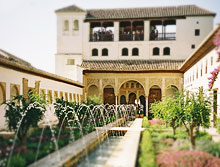 1. El Generalife
1. El Generalife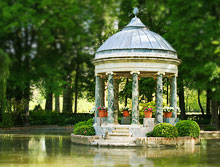 2. The Aranjuez Gardens
2. The Aranjuez Gardens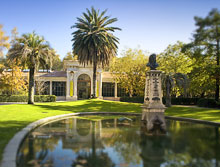 3. The Royal Botanical Garden of Madrid
3. The Royal Botanical Garden of Madrid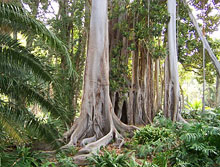 4. Jardín de Aclimatación de La Orotava
4. Jardín de Aclimatación de La Orotava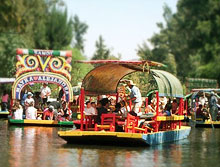 5. The Floating Gardens of Xochimilco
5. The Floating Gardens of Xochimilco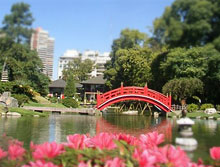 6. The Japanese Garden of Buenos Aires
6. The Japanese Garden of Buenos Aires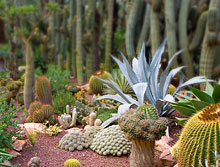 7. Huerto del Cura
7. Huerto del Cura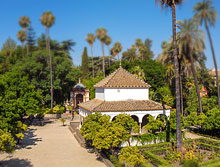 8. The Alcázar Garden
8. The Alcázar Garden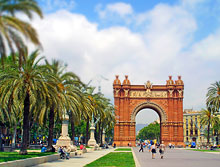 9. Ciudadela Park
9. Ciudadela Park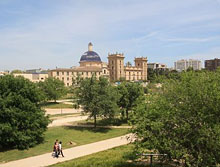 10. Turia Garden
10. Turia Garden